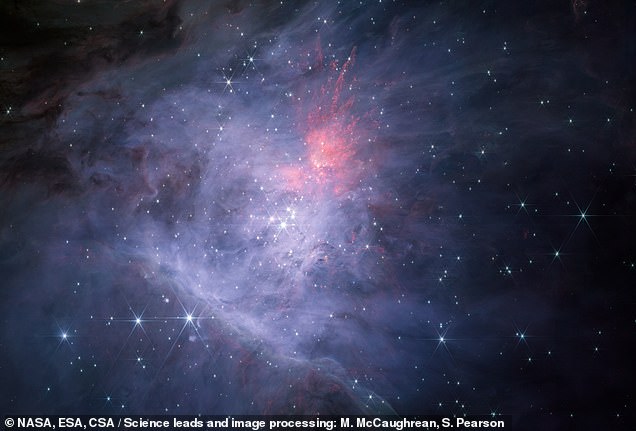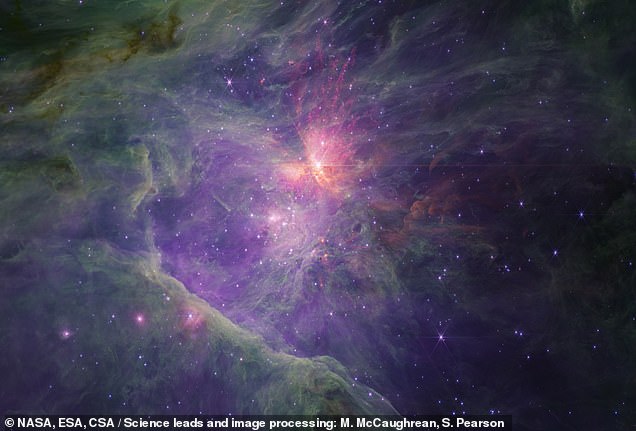NASA’s James Webb discovers an entirely new category of worlds: Incredible images reveal mysterious planet-size objects dubbed ‘Jumbos’
>
NASA’s James Webb Space Telescope has revealed a mysterious new class of objects while looking at the Orion Nebula about 1,344 light-years away.
Jupiter-mass binary objects, or “JUMBOs,” are a strange new class of worlds that seem to defy classification, even leaving scientists scratching their heads.
They are called JUMBOs because they are similar to Jupiter in mass, but they cannot be planets because they do not orbit their parent star and are too small to be stars.
The jumbos have steam and methane in their atmospheres and have hellish surface temperatures of about 1,830 degrees Fahrenheit (1,000 degrees Celsius), but experts don’t think they’re home to alien life.
The jumbo objects have been identified in new images revealed by the European Space Agency (ESA) that show the Orion Nebula in unprecedented detail.
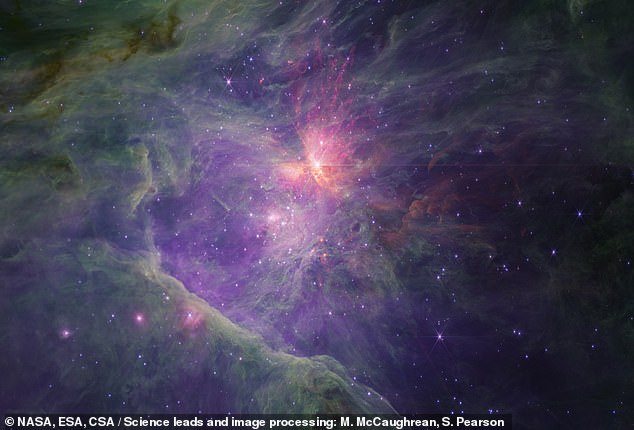
This stunning wide-angle image brought to us by the James Webb Space Telescope (JWST) shows the Orion Nebula, about 1,344 light-years from Earth. It reveals the existence of JUMBOs – Jupiter-sized objects that are neither planets nor stars
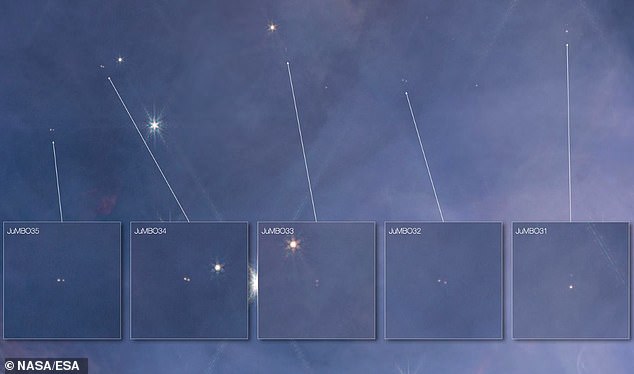
The James Webb Telescope has observed about 40 pairs of Jupiter-mass binary objects (JUMBO). This photo selects five of them
According to the agency, data from ground-based telescopes hinted at the existence of jumbo objects before they were officially identified by James Webb.
“We were looking for these very small objects and we found them,” said Professor Mark Macogrian from the European Space Agency. guardian.
“At the bottom we find it the size of Jupiter’s mass, or even half the mass of Jupiter, floating freely, not attached to a star.
“Physics says you can’t even make things that small.” We wanted to see, can we break the physics? I think we have, which is good.
JUMBOs include the word “binary” in their name because some come in pairs, such as binary solar systems containing two stars.
The James Webb Telescope observed about 40 jumbo pairs in total.
While jumbo is too small to be stars, that doesn’t mean it’s planets.
First, they are “free-floating,” so they do not orbit the parent star.
They’re hot and gaseous, have atmospheres of steam and methane, and are about a million years old, making them “babies” in astronomical terms.
On the left, the image from the short-wavelength Webb NIRCam channel shows the nebula, its stars and other objects at high resolution in the near infrared. On the right, the image from the long-wavelength Webb NIRCam channel reveals gas, dust, and particles in the infrared, but at a lower spatial resolution. The cavity is filled mostly with ionized gas, shown here in purple, while the surrounding areas contain a mixture of dust and molecular gas, shown in red, brown and green.
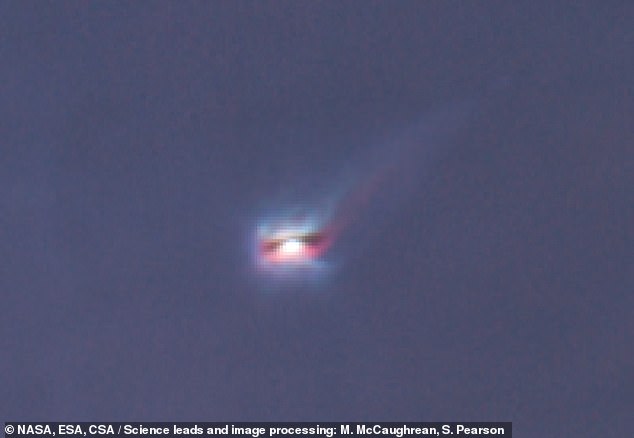
This short-wavelength infrared image of the Orion Nebula shows a young star and its protoplanetary disk being sculpted by intense ultraviolet radiation and winds from the massive trapezoidal stars located at the center of the region
Since they are gas giants similar to Jupiter and not rocky like Earth or Mars, Jumbo is unlikely to be home to reservoirs of liquid water, and therefore is not thought to host alien life.
However, jumbo objects puzzle researchers at ESA and NASA because current planetary formation theories do not take their existence into account.
It should not be possible for Jupiter-sized objects like these to form through the process that gives rise to stars within the nebula.
A nebula is an enormous cloud of dust and gas that occupies interstellar space and acts as a nursery for new stars.
Nebulae form when a star larger than our Sun begins to die and releases a solar wind of gas.
The Orion Nebula, about 1,344 light-years from Earth and also known as Messier 42, is located in the Milky Way, south of Orion’s Belt in the constellation Orion.
Like most nebulae, the Orion Nebula is diffuse, meaning it has no clearly defined boundaries.
It is also one of the brightest nebulae and can be seen with the naked eye in the night sky.
The European Space Agency has published other new images of the Orion Nebula taken by James Webb, including bright “fingers” of gas accelerating away from an explosion that occurred approximately 500 to 1,000 years ago.
Another image shows a young star and its protoplanetary disk being sculpted by intense ultraviolet radiation and winds.
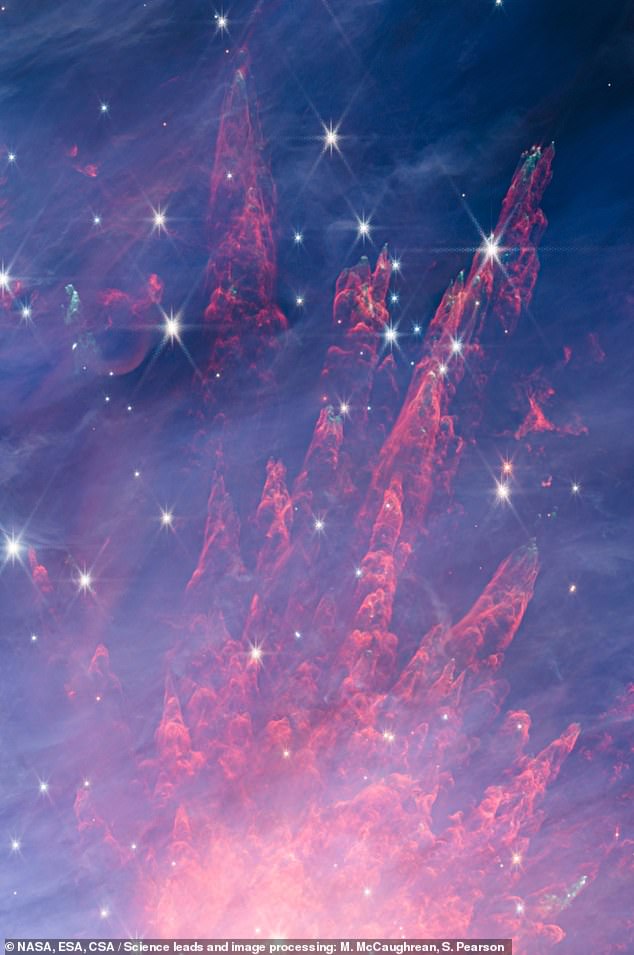
A short-wavelength infrared image of the Orion Nebula shows bright “fingers” of gas accelerating away from an explosion that occurred approximately 500 to 1,000 years ago at the heart of a dense molecular cloud behind the nebula, perhaps during the collision of two young, massive stars.
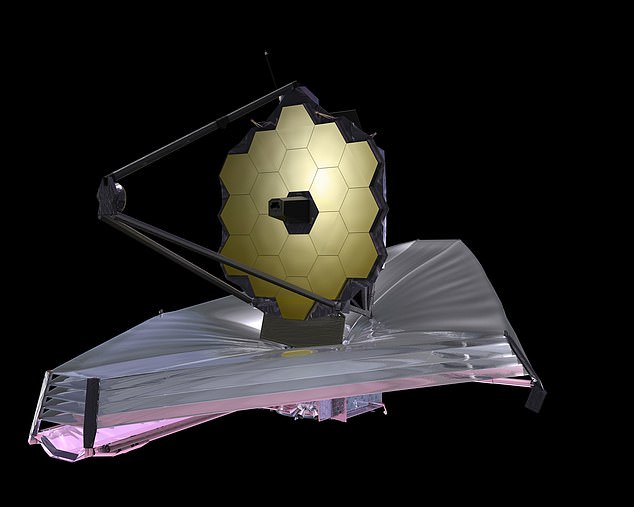
The James Webb Space Telescope (JWST, shown here in space) is the largest and most powerful space telescope ever built
The European Space Agency claims that the nebula is a “treasure” for astronomers studying star formation and early evolution.
It has a rich diversity of phenomena and objects, including free-floating mass planetary objects such as jumbo objects and protostars (young stars still gathering mass from their parent molecular cloud).
They also contain “brown dwarfs” – astronomical objects that are not quite stars or planets, and are often described as “failed stars.”
Brown dwarfs are more massive than planets, but unlike stars they do not have enough mass to sustain nuclear fusion in their cores.
New images are included in ESAsky application ESAa free, easy-to-use online interface for visualizing and downloading astronomical data.
The results are It was published as a preprint On Professor Macogrian’s website, and has not yet been peer-reviewed.
(Tags for translation)dailymail

